Tips & Tricks
Speeding Up Illustrator
A map that contains a large number of features can be pretty demanding on your computer's memory and processor when you load it into Adobe Illustrator. This can result in very slow viewing, scrolling and editing experience. Illustrator itself is not known to be very proficient when it comes to using computer resources effectively, but there are some steps you can take to speed things up. These steps are described in the following subsections.
Disabling Anti-aliased Artwork
By default, Illustrator draws the artwork using anti-aliasing, which smoothes text and graphics. You can get a small performance improvement by turning off the anti-aliasing. Select the menu command: Edit -> Preferences -> General...):
 General Preferences menu command
General Preferences menu command
... and in the Preferences dialog turn off the Anti-aliased Artwork option:
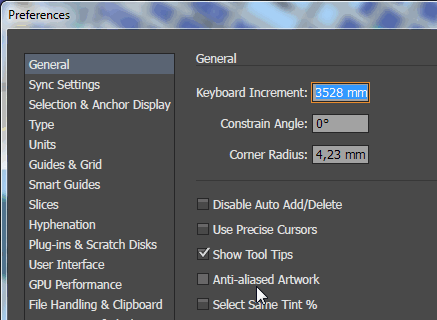 Preferences dialog
Preferences dialog
Although the speed-up is not as substantial as by using the Outline view (described below), the advantage is that you can still see the coloring and styling of the map objects.
Outline View
After loading the map in Illustrator, the first thing you can do to improve performance is to switch to Outline mode (menu command: View -> Outline View): Outline View menu command
Outline View menu command
In the Outline mode Illustrator only shows the black-and-white outlines (paths) of the artwork, without colors and without polygon filling. Additionally, it skips drawing of small text labels and replaces them with simple dithered boxes. This considerably speeds up drawing of the map. Here is a side-by-side comparison of a sample map shown in Illustrator, first in the default preview mode and then in the outline mode:
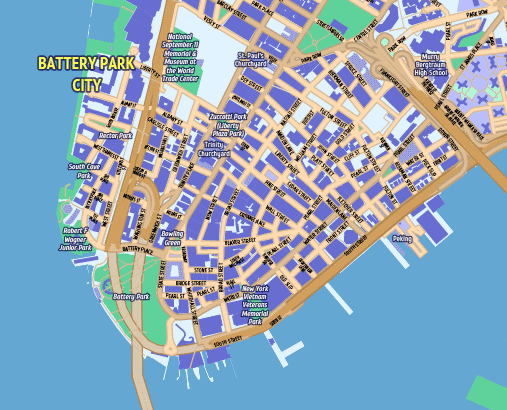 Sample map shown in the Preview mode
Sample map shown in the Preview mode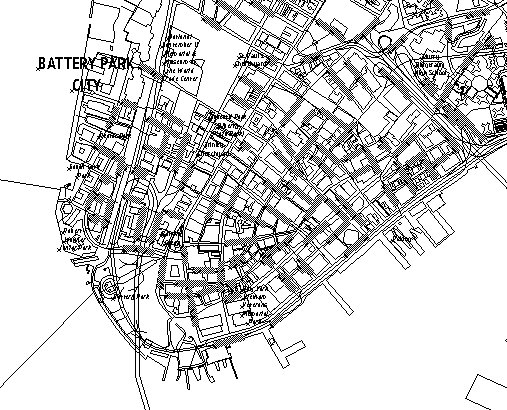 Sample map shown in the Outline mode
Sample map shown in the Outline mode
You can swich back to Preview mode using the same menu command / keyboard shortcut.
Hiding Layers
High-detailed city maps typically contain thousands (or even tens of thousands) of building polygons and these can really slow down your Illustrator. If you are not directly working on these buildings, you can turn off the whole layer by opening the Layers panel (menu command: Window -> Layers):
 Layers menu command
Layers menu command
Once the Layers panel shows up, we must look for appropriate layers to switch off. Due to the way how OpenStreetMap data is structured and how the painter's algorithm works, buildings are usually split into several layers, called "buildings (level ...)" (for more information about how layers are organized, visit the Layers section). Click on the "eye" icon for each of these layers to hide the layer. The final result should be something like this:
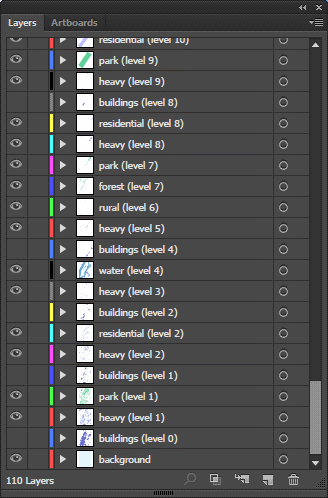 Layers panel with buildings layers hidden away
Layers panel with buildings layers hidden away
Hiding Everything Except...
If you really want to speed things up, you can hide all layers except the one you are working on at the moment. Select an object of the layer you want to work with and then run the Object -> Hide -> Other Layers menu command:
 Hide Other Layers menu command
Hide Other Layers menu command
Later you can turn the layers back on using the Show All Layers menu command of the Layers panel (click on the top right icon on the panel):
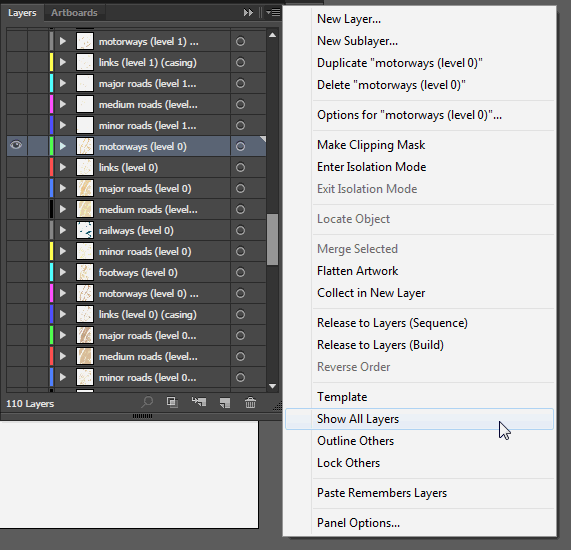 Layers panel's Show Layers menu command
Layers panel's Show Layers menu command
Turning Off Thumbnail Previews
For each layer (and even individual objects) Illustrator shows a small thumbnail preview in the Layers panel. These thumbnails are not very useful for map artwork, since maps consist of many small objects which are very difficult to spot in a small thumbnail image. On the other hand Illustrator needs to spend valuable resources to update the thumbnails every time something changes in the artwork. So disabling thumbnail previews is one simple way to speed things up a little bit.
To disable thumbnail previews, choose Panel Options from the Layers panel menu (click on the top right icon on the panel): Layers panel's Panel Options menu command
Layers panel's Panel Options menu command
In the Layers Panel Options dialog, uncheck all Thumbnails checboxes: Layers Panel Options dialog with thumbnails turned off
Layers Panel Options dialog with thumbnails turned off